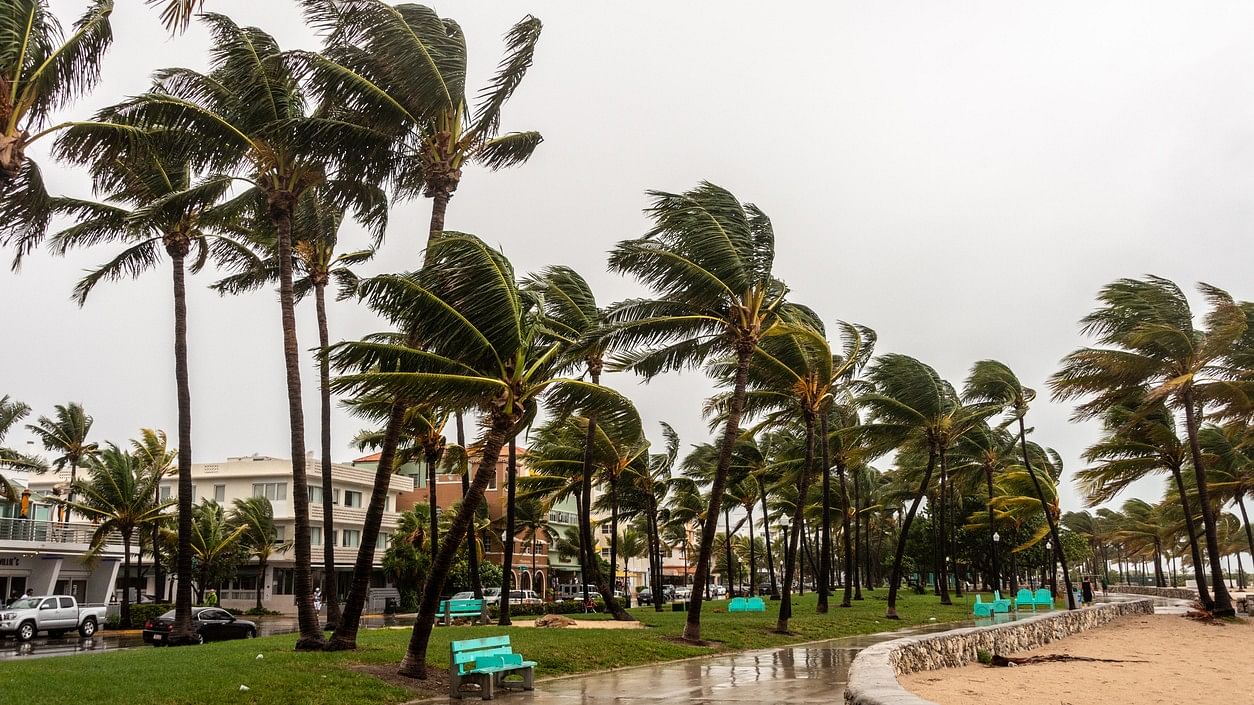
Representative image of a typhoon.
Credit: iStock Photo
Typhoon Yinxing made landfall in the Philippines on Thursday, bringing dangerous winds and intense rainfall to Luzon, the nation's most populous island.
The tropical cyclone, known locally as Marce, hit the north coast of Luzon twice, striking the town of Santa Ana at 3:40 p.m. as a Category 4 storm before moving west across a bay to hit the town of Sanchez-Mira at 9 p.m., according to the country's meteorological service.
Both towns lie in the province of Cagayan, an area with a rugged coastline at the northern tip of the Philippine island chain, nearly 500 miles north of Manila.
The storm was downgraded to a Category 3 hurricane early Friday, according to meteorologists, with sustained winds of 115 mph.
While there were no immediate reports of casualties. Authorities warned early Friday morning that "life-threatening conditions persist" in portions of Cagayan and the neighboring provinces of Apayao and Ilocos Norte.
Officials warned of storm surge surpassing 10 feet and local media reported uprooted trees and flying debris.
Shortly before Typhoon Yinxing made landfall on Santa Ana on Thursday afternoon, it had maximum sustained winds of about 144 mph, the U.S. Navy's Joint Typhoon Warning Center said in an advisory.
At 11 pm, officials in the Philippines reported sustained winds of around 110 mph with gusts of up to 180 mph. The storm, which officials said was crawling west at about 13 mph, was expected to move out of Philippines waters by Friday afternoon.
Typhoon Yinxing comes on the heels of back-to-back storms in the Philippines this fall. Late last month, Tropical Storm Trami killed at least 80 people and forced half a million residents to evacuate.
Ahead of Typhoon Yinxing, more than 160,000 people had been evacuated by Thursday morning, according to the Office of Civil Defense. Officials discouraged travel, and plans were being put in place to deliver food and fuel in the area in case of shortages. Some schools and workplaces were closed, and dam operators were anticipating heavy rain.
The Philippine coast guard was tasked with ensuring that supplies reached isolated communities, particularly in the northern province of Batanes, a remote archipelago.
On Wednesday, President Ferdinand Marcos Jr. said in a statement that he was placing the country on "high alert" and that he had ordered the public works and transportation departments to be ready for road-clearing operations. The government issued flash flood and landslide warnings, and urged residents to evacuate or take shelter.
The Philippines is prone to storms and sees an average of 20 a year.
Before Tropical Storm Trami last month, Typhoon Krathon hit the country's northern regions in September, causing flash flooding. The storms, which wiped out crops and affected millions of people, prompted Marcos to declare a national day of mourning this week and to visit Batangas province, one of the worst hit areas, according to The Associated Press.
In 2020, Typhoon Vamco led to devastating flooding across Cagayan province after a river overflowed, submerging nearly all of its 28 villages.